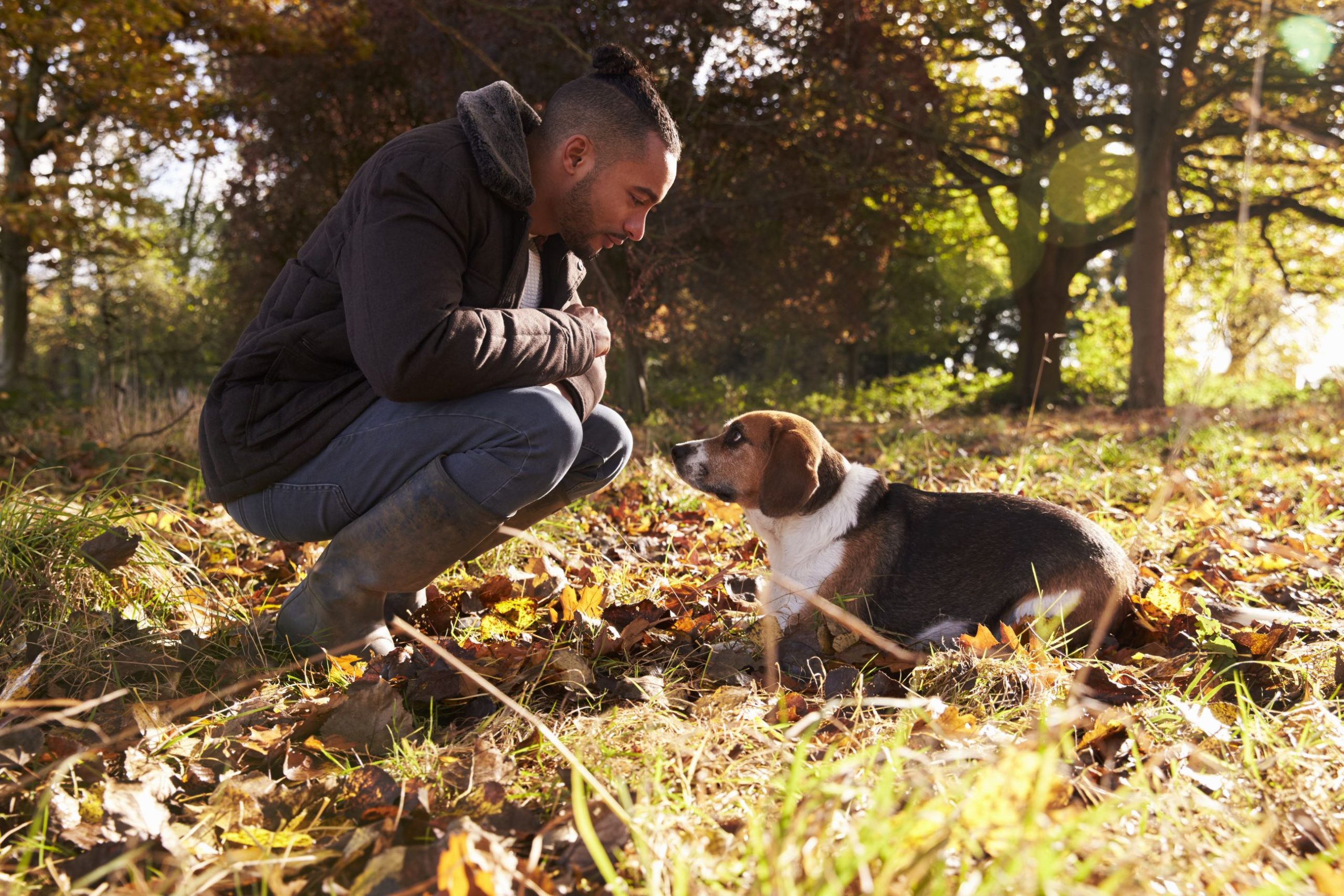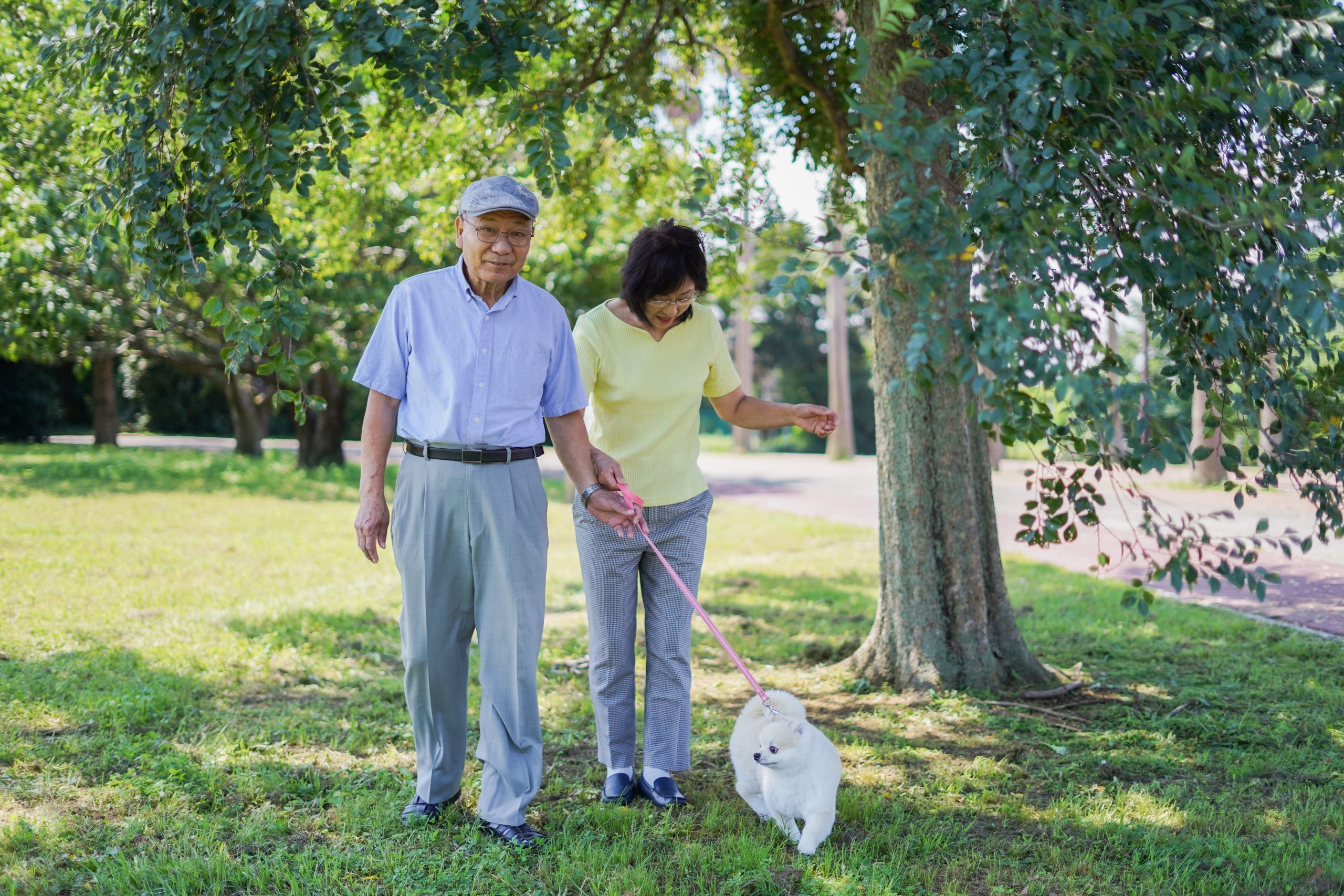The Benefits of Walking a Dog – A Guide to Guide the Way
Embarking on a walk with your dog is likely part of your daily routine. However, walking your furry friend isn’t just a necessary chore; it’s an activity that offers a wide range of advantages for both you and your pet. From physical health benefits to mental well-being, walking a dog is an essential part of their overall care and happiness. Along with benefits to walking a dog there are also some helpful tips and tricks to make your dog walking experience better based on common challenges that pet owners encounter. So, let’s delve into the details and discover why regular walks with your dog are so important and how to curb walking issues you may face.
Physical Health Benefits of Dog Walks
Walking your dog is not only a great way to bond with your furry friend, but it also offers a wide range of physical health benefits for both of you. Let’s explore some of the reasons why regular dog walks can be beneficial for both you and your canine companion:

Increase physical fitness: Walking your dog provides a fantastic opportunity for exercise. Whether you’re strolling through the neighborhood or exploring a nearby trail, the physical activity involved in walking can help improve your overall fitness level. Plus, it gives your dog a chance to burn off energy and stay active.
Improve cardiovascular health: Regular walking can have a positive impact on your cardiovascular system. It can help strengthen your heart, increase blood circulation, and lower the risk of heart disease. Taking your dog for a walk is a simple yet effective way to keep both of your hearts healthy.
Help maintain a healthy weight: Walking is an excellent form of exercise for weight management. By engaging in regular walks with your dog, you both can burn calories, build muscle, and maintain a healthy weight. This is not only beneficial for you but also for your furry friend, as obesity can lead to various health problems in dogs.
New to dog walks? If you are not a frequent dog walker, VCA Animal Hospitals suggests starting the new year with a fresh slate. They suggest, starting “out slowly by taking a few 10-minute practice walks around the neighborhood. When you – and your dog – are ready, increase the time and distance”. Read more about how to start out.
Walking a Dog – Mental Health Benefits
Walking a dog is not only beneficial for their physical health but also for their mental well-being. Here are some of the mental health benefits that come with regular walks:

- Reduce stress and anxiety: Walking allows dogs to release pent-up energy and reduces stress levels. It provides an outlet for their natural instincts and helps them relax.
- Improve mood and happiness: Going for a walk exposes dogs to different sights, sounds, and smells, which stimulates their senses and boosts their mood. The fresh air and exercise also contribute to a general sense of happiness.
- Enhance cognitive function: Walking engages a dog’s brain as they explore their surroundings, encounter new experiences, and engage with their environment. This mental stimulation helps improve cognitive function and can even help slow down cognitive decline in older dogs.
By incorporating regular walks into your dog’s routine, you can help improve their mental well-being and provide them with a happier, healthier life.
Behavioral Benefits of Dog Walking
Daily walks can provide numerous behavioral benefits for your furry friend. Here are three key ways that walking a dog can positively impact their behavior:
Prevent destructive behaviors: Dogs are naturally active creatures, and without regular exercise, they may resort to destructive behaviors out of boredom or excess energy. Walking your dog on a daily basis can help alleviate this problem by providing a healthy outlet for their energy. By tiring them out through physical activity, you can significantly reduce the likelihood of destructive behaviors such as chewing furniture, digging holes in the yard, or excessive barking.
Promote socialization with other dogs: Walking your dog allows them to interact with other dogs they may encounter along the way. This socialization is crucial for their mental well-being and can help them develop proper dog-to-dog communication skills. Meeting and playing with other dogs during walks can reduce the likelihood of fear or aggression towards other animals, making your dog more comfortable and confident in various social settings.
Increase obedience and training opportunities: Walking your dog on a leash provides an excellent opportunity for obedience training. It allows you to establish control and reinforce commands such as sit, stay, and heel. Regular walking sessions also help strengthen the bond between you and your dog, making them more responsive to your commands and enhancing their overall obedience. Additionally, exposing your dog to different environments, sights, and sounds during walks can help desensitize them, making future training sessions more effective.
Bonding and Building Your Relationship During a Walk
Walking a dog is not just about getting exercise; it also provides numerous bonding and relationship benefits between you and your furry friend. The American Kennel Club states in a recent article that, “a prime motivation for walking our dogs is that it makes us happy. And why does it make us happy? Because we believe it makes our dogs happy, too”. Here are some ways that regular walks can strengthen the bond between you and your dog:
- Strengthen the bond between dog and owner: Taking your dog for a walk allows you to spend quality time together. The shared activity of walking creates a sense of companionship and reinforces the bond between you and your pet. It is a chance for you to connect with your dog on a deeper level and show them your love and care.
- Create shared experiences and memories: Each walk you take with your dog becomes a shared experience and an opportunity to create lasting memories. Whether it’s exploring new paths, encountering other dogs, or simply enjoying the sights and sounds of nature, these moments build a strong connection between you and your pet.
- Enhance trust and communication: Walking your dog requires trust and communication. As you navigate different environments and encounter various situations together, your dog learns to trust your guidance and rely on your cues. This mutual understanding strengthens the bond between you and helps improve overall communication.
Overall Dog Walking Benefits
Walking your dog regularly not only benefits their physical health, but also has a positive impact on their overall well-being. Let’s explore some of the ways walking can improve your furry friend’s overall well-being:
Improve Sleep Quality: Dogs need regular exercise to help them burn off energy and maintain a healthy sleep pattern. By taking your dog for a walk, you are helping them to release pent-up energy, which can result in better sleep quality for both of you.
Boost Immune System: Regular exercise, such as walking, can help strengthen your dog’s immune system. When your dog is physically active, their body produces more white blood cells, which are essential for fighting off infections and diseases.
Increase Overall Happiness and Fulfillment: Dogs are social animals, and walking provides them with an opportunity to explore their surroundings, interact with other dogs, and receive mental stimulation. A happy and fulfilled dog is more likely to exhibit positive behavior and have a better quality of life.
Overcoming Common Challenges During Dog Walks
Embarking on a leisurely stroll with your canine companion is often portrayed as a serene bonding experience, but the reality can sometimes be quite different. Overcoming some of the most common challenges during dog walks will create a better experience for you and your pooch.
Leash reactivity, characterized by excessive barking, lunging, or pulling, can turn a peaceful walk into a stressful ordeal. Understanding the triggers and addressing the root cause is the first step in overcoming this challenge. Gradual desensitization and positive reinforcement techniques can help modify your dog’s behavior over time. Consider enrolling in obedience training classes or consulting with a professional trainer for personalized guidance.
Meeting other dogs during walks can be unpredictable. Some dogs are social butterflies, while others may display signs of anxiety or aggression. Teach your dog basic commands like “sit” and “stay” to help manage interactions. Always ask the other owner if it’s okay for your dogs to greet each other, and be prepared to gracefully redirect your dog’s attention if needed. Keeping a safe distance and using treats as positive reinforcement can make these encounters more pleasant.

From enticing scents to captivating sights, dogs are naturally curious creatures. While exploration is healthy, excessive pulling or darting towards distractions can pose challenges. Invest in a comfortable and well-fitted harness to minimize pulling, and practice loose leash walking during training sessions. Reward your dog for walking calmly by your side, reinforcing the desired behavior.
Walking in different weather conditions can present unique challenges. Hot pavement can burn sensitive paw pads, while cold weather may require protective gear for your dog. Always check the temperature and adjust the length and intensity of walks accordingly. Carry water to keep both you and your dog hydrated, and invest in appropriate gear to shield against the elements.
Dogs, like humans, can experience fear or anxiety during walks. Identify the triggers and introduce positive associations. Gradual exposure, treats, and calming body language can help alleviate fears. If anxiety persists, seek guidance from a professional behaviorist to develop a tailored approach to address your dog’s specific needs.
From bustling city streets to serene parks, the variety of environments during walks can be overwhelming for some dogs. Gradually expose your dog to different settings, starting with less stimulating areas and gradually progressing to more challenging environments. This helps build confidence and adaptability over time.
Conclusion – Navigating the Path to a Happy and Healthy Bond with Your Dog
In the tapestry of life, the daily walks with your four-legged companion weave threads of joy, health, and connection. The benefits of walking your dog extend beyond the physical exercise, delving into the realms of mental well-being, behavioral harmony, and the strengthening of the unique bond you share. As you stride through challenges like leash reactivity, unexpected encounters, or weather woes, remember that each obstacle is an opportunity for growth, learning, and an even deeper connection with your furry friend.
By understanding the intricacies of your dog’s behavior, employing positive reinforcement techniques, and gradually exposing them to various stimuli, you can transform your walks into delightful adventures. The physical health benefits of exercise, the mental stimulation derived from exploring the world, and the shared experiences that enhance your bond all contribute to a happier, healthier life for both you and your beloved pet.
So, leash up, embark on the journey, and revel in the shared moments, for each step you take together contributes to the rich tapestry of a fulfilling life for you and your furry companion. Happy walking!





